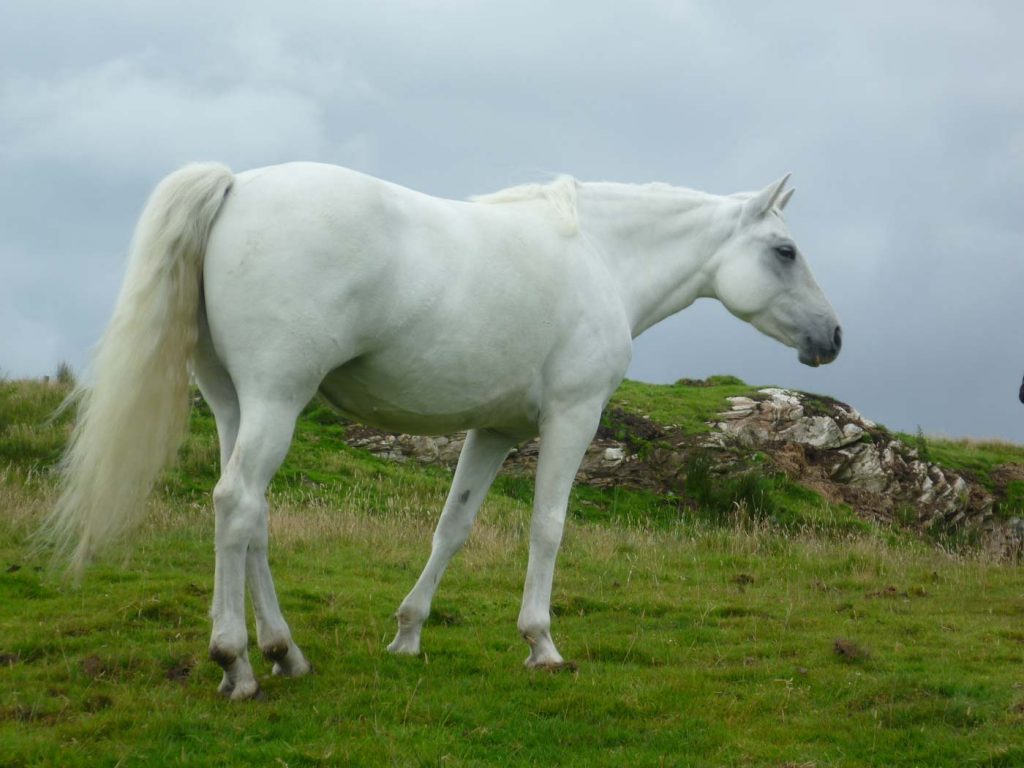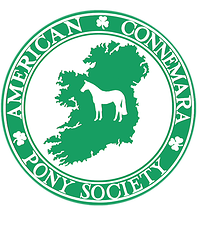About
What is a Connemara?
An unusual blend of natural selection and human need, a Connemara is...
- suitable for all ages
- adaptable to climate extremes
- as competitive as the best sport horses
- the largest pony breed
- a natural jumper
Centuries of natural selection, followed by the past century of selective breeding has given us the quality Connemara we have today.
Quick facts about Connemara ponies:
Most Common: Gray, Buckskin
Also acceptable: Black, Bay, Brown, Chestnut, Palomino, Roan, Black Points, Blue Eyed Cream
Not acceptable: Paint
Acceptable: 13 -15 hands
Average: 14 – 14.2 hands
30-40 years
5 years or older.
Show jumping, dressage, working hunter, eventing, western pleasure, endurance, driving, foxhunting – Connemaras can do it all, and can be your best friend!

Ireland's only native breed.
Introduced by the Ancient Celts: notoriously skilled horseman.
Mythology tells us that the tribes of western Ireland were mounted. Legend has it that when the Spanish Armada sank off the Connemara coast in the 16th Century, the horses swam to shore and bred with the native ponies running wild in the mountains. They learned to live on the tough vegetation and survive the hardships of their habitat, as a misplaced step could send a pony crashing to its death.
Humble Beginnings.
The region of Western Ireland known as Connemara is rocky, barren mountainous terrain. Craggy, lunarscaped strands, pounded by the tide and storms of the Atlantic with endless desolate moors and bogs.
It was a desperate and arduous life for the farmers of the area. With large families to support, they could only afford one good pony – often captured off the mountain and tamed.

Hardiness & Stamina.
The farmer’s horse had to be a mare who could give him a foal each year, to sell for their subsistence through the long, dark winter. The mare would pull a plow, a cart, work from dawn to dusk at whatever task was needed under extremely harsh conditions.
Fitted with baskets called creels, they carried a heavy load. Tons of rock were moved by them to claim the land. Seaweed used to fertilize the barren fields was dragged from the shore by the ponies. They carried turf cut from the bogs, used for cooking and heat. Strong, sturdy legs could maneuver through the muck, which might swallow a different type of horse. Never a day of rest, she also carted the family to Mass on Sunday. She had to have the hardiness, stamina and disposition needed, or she was replaced with a mare who could. In this manner, the good mares were kept in Connemara reproducing these qualities in their foals.
Stallions would travel the primitive roads between villages, covering many mares and many miles in one day. Local racing was popular and the Connemaras competed equally with the larger Irish Hunters and Thoroughbreds.
Gentle & Adaptable
Along with great athleticism and versatility, the Connemara has a special kindness, a huge heart, and an ability to bond with their human handlers that is unique to this breed.
A gentle disposition is a Connemara pony's most outstanding characteristic. Its adaptability allows it to excel in all equestrian sports.
Connemara Breed Standard
Mannerly and manageable, kind, responsive, possessing good sense and basic intelligence.
Rugged and sturdy; body compact, deep through the heart, with well-sprung rib cage and broad chest.
Straight and true both front and rear with free movement in the shoulders. Connemaras should move underneath themselves and should be sure-footed, athletic, and clever, covering a lot of ground.
Kind eye, head well shaped and balanced in proportion to the rest of the body; neck of good length and definition, meeting the shoulder smoothly.
Long, well laid back, and with good slope.
Strong and muscular; some length of back is normal in Connemaras, especially in mares.
Well rounded and deep with good length from the point of the hip through the haunch; should balance the shoulders.
Clean, hard, flat, proportionately substantial for height; forearms and gaskins long and muscular, cannons short and very dense.
Large and well defined.
Hard, strong.
